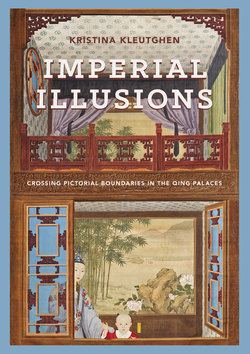Читать книгу Imperial Illusions - Kristina Kleutghen - Страница 78
На сайте Литреса книга снята с продажи.
Оглавление2.2First plate from Pozzo, Perspectiva pictorum et archi-tectorum, English and Latin edition, 1707.
Straight lines are perfectly straight and right angles perfectly cornered, demonstrating that they were produced with the straightedges and T-squares seen in the illustration, while the open compasses indicate how perfect circles and precise angles are produced. Compasses and squares were not European imports, however; they are frequently seen in ancient images of Fuxi (holding a carpenter’s square) and his sister/wife Nüwa (holding a compass), the mythical beings who created the Chinese people.41 Straightedges (jiechi or zhichi) and line brushes (jiebi) were historically used to produce the precise straight lines in jiehua architectural painting.
Although an architectural painting specialist would have used tools such as straightedges in his work, literati painters did not (or did not admit to doing so). Paintings produced with such instruments were deemed artisanal rather than artistic, and seen historically as inferior to paintings produced freehand. The ninth-century art historian Zhang Yanyuan commented that “if one makes use of line-brush and ruler, the result will be dead painting,” and eight hundred years later, during the Kangxi reign, the late Ming individualist painter Shitao (1642–1707) shared his disapproval.42 By the early 1700s, such tools also carried Western connotations. Matteo Ripa recorded that Giovanni Gherardini’s Chinese
